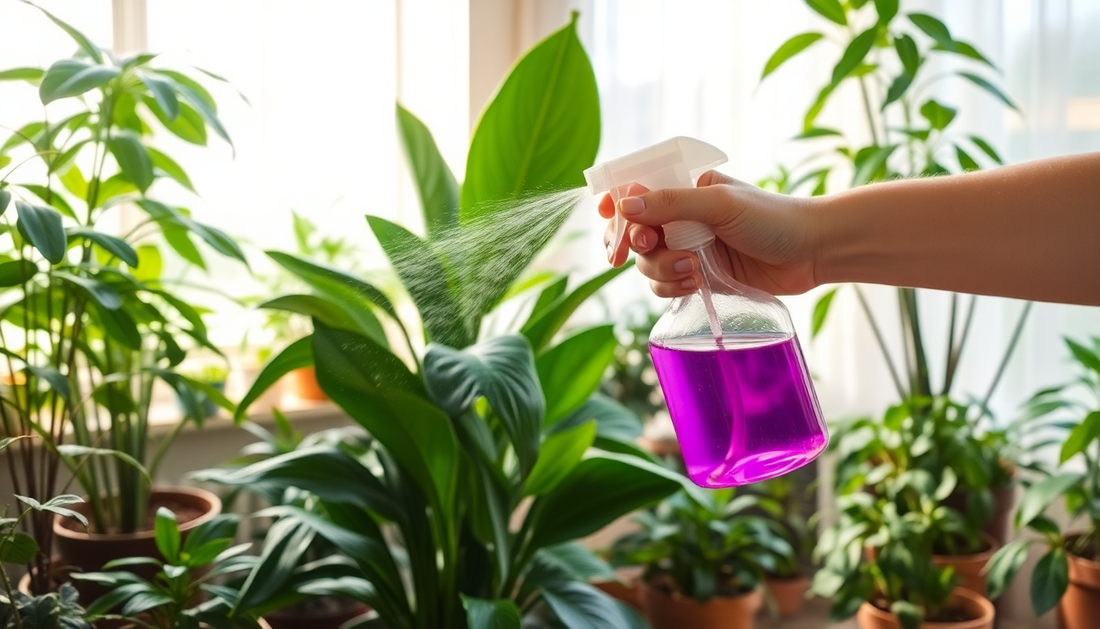
The Best DIY Pest Sprays for Houseplants
As a passionate plant parent, I know the struggle of dealing with pesky pests that can wreak havoc on our beloved houseplants. From aphids to spider mites, these tiny invaders can quickly turn a thriving plant into a withered, sickly one. However, instead of reaching for harsh chemical pesticides, there's a better way to protect your plants - homemade, eco-friendly pest sprays.
In this comprehensive guide, I'll share the best DIY pest control solutions that are not only effective but also safe for your plants, pets, and the environment. Get ready to bid farewell to those unwanted guests and keep your indoor jungle thriving!
Understanding Common Houseplant Pests
Before we dive into the DIY pest sprays, it's important to familiarize ourselves with the most common culprits that can plague our houseplants. Knowing your enemy is the first step in winning the battle.
Aphids
These tiny, pear-shaped insects come in a variety of colors, including green, red, black, and white. They feed on the sap of plants, causing leaves to curl, yellow, and eventually die.
Spider Mites
Barely visible to the naked eye, spider mites spin fine webs on the underside of leaves, sucking the life out of your plants. They thrive in dry, warm conditions, making them a common problem for indoor gardeners.
Mealybugs
Resembling small, white cotton balls, mealybugs feed on the sap of plants, leaving behind a sticky, honeydew-like substance that can attract other pests.
Scale Insects
These small, oval-shaped insects attach themselves to the stems and leaves of plants, forming a protective shell that can be challenging to remove.
Thrips
These slender, winged insects feed on the leaves and flowers of plants, causing discoloration, distortion, and even premature dropping of leaves.
DIY Pest Control Sprays
Now that we've identified the common culprits, let's dive into the best homemade pest control solutions that you can easily make at home.
Neem Oil Spray
Neem oil is a natural, plant-based insecticide that is highly effective against a wide range of pests, including aphids, spider mites, mealybugs, and more. To make a neem oil spray, simply mix 1-2 tablespoons of pure neem oil with 1 quart of water and a few drops of mild liquid soap or castile soap. Shake well and spray the affected areas of your plants, making sure to cover the undersides of the leaves.
Garlic and Pepper Spray
This pungent spray is a natural deterrent for many common houseplant pests. Blend together 4-5 cloves of garlic, 1 tablespoon of cayenne pepper, and 1 quart of water. Let the mixture steep for 30 minutes, then strain and pour into a spray bottle. Apply the spray directly to the affected plants, being careful to avoid getting it on your skin or in your eyes.
Castile Soap Solution
Castile soap is a gentle, plant-based soap that can be effective in controlling soft-bodied pests like aphids and mealybugs. Mix 1-2 tablespoons of castile soap with 1 quart of water and spray the affected areas of your plants. Reapply as needed, as this solution can be less effective than other homemade sprays.
Vinegar and Water Spray
A simple mixture of white vinegar and water can be a powerful weapon against fungus gnats and other soil-dwelling pests. Combine 1 part white vinegar with 3 parts water in a spray bottle and mist the soil around your plants. Avoid getting the spray on the leaves, as the acidity can potentially damage them.
Diatomaceous Earth
This fine, powdery substance is made from the fossilized remains of tiny aquatic organisms called diatoms. When applied to the soil or leaves of your plants, the sharp edges of the diatomaceous earth can puncture the exoskeletons of insects, causing them to dehydrate and die. Sprinkle a thin layer of diatomaceous earth around the base of your plants and reapply after watering or heavy rain.
Proper Application and Timing
Regardless of which homemade pest control spray you choose, it's important to follow a few best practices to ensure maximum effectiveness:
-
Timing: Apply your DIY pest spray in the early morning or late evening when the sun is not at its strongest. This will help prevent the solution from evaporating too quickly and ensure better coverage on your plants.
-
Thorough Coverage: Make sure to spray the undersides of leaves, where many pests like to hide, as well as the stems and soil around the base of the plant.
-
Reapplication: Homemade pest sprays may not be as long-lasting as commercial pesticides, so be prepared to reapply every 7-10 days, or as needed, to maintain control.
-
Spot Testing: Before spraying your entire plant, test the solution on a small, inconspicuous area first to ensure it doesn't cause any damage or discoloration.
-
Rotation: Consider rotating between different homemade pest control methods to prevent pests from developing resistance to any one solution.
Preventive Measures
While DIY pest sprays can be highly effective, it's also important to implement preventive measures to keep your houseplants healthy and pest-free in the long run. Here are some tips:
Maintain Proper Plant Care
Ensure your plants are receiving the right amount of water, light, and nutrients. Healthy, well-cared-for plants are less susceptible to pest infestations.
Practice Good Hygiene
Regularly inspect your plants for signs of pests, and quarantine any new plants before introducing them to your indoor garden. Wipe down leaves with a damp cloth to remove dust and debris.
Encourage Natural Predators
Attract beneficial insects like ladybugs, lacewings, and predatory mites to your indoor garden. These natural pest controllers can help keep populations in check.
Provide Proper Airflow
Stagnant air can create the perfect environment for pests to thrive. Use fans or open windows (when possible) to improve air circulation around your plants.
By combining these preventive measures with the effective DIY pest control sprays outlined in this guide, you'll be well on your way to maintaining a thriving, pest-free indoor oasis. Happy gardening!







No comments